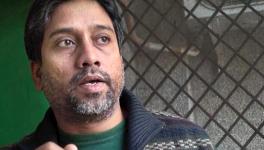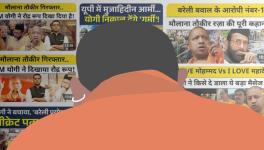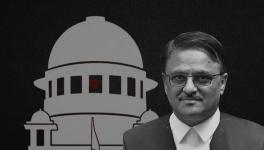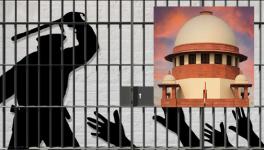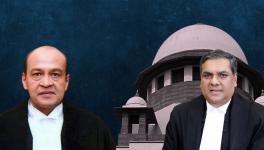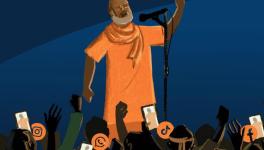Supreme Court’s Curious Judgment in the Amish Devgan Case: Numerous Questions
The Supreme Court’s double standards in applying hate-speech principles and adopting different procedural approaches in different cases add chaos in the already confusing jurisprudence on hate-speech, writes MANI CHANDER.
On December 7, the Supreme Court of India in an attempt to strike a balance in regulating expressive freedom and define the contours of hate speech delivered a 128-page long judgment in the case of Amish Devgan v. Union of India.
While the judgment extensively relies upon the wisdom of various foreign jurisdictions as well as the court’s own precedents to re-examine the definition of hate speech, it cautiously noted: “It remains difficult in law to draw the outmost bounds of freedom of speech and expression, the limit beyond which the right would fall foul and can be subordinated to other democratic values and public law considerations, so as to constitute a criminal offence.”
Not only does the Devgan judgment once again shine a light on the overbroad and vague interpretations that the law against hate speech receives, it also brings to fore the variance in proactivity shown by the court in certain cases as compared to others.
Who is a ‘Reasonable Person’ in law?
One striking aspect of the judgment is that it’s analysis of what constitutes hate speech hinges on the troubling concept of ‘reasonableness’.
This “reasonable, strong-minded, firm and courageous” person standard is at the heart of the hate speech debate and the reason why, despite significant attempts, the hate speech jurisprudence in India remains largely vague.
The judgment cites, among others, the case of Ramesh S/o Chhotalal Dalal v. Union of India and Others, which provided that, “the effect of the words used must be judged from the standards of reasonable, strong-minded, firm and courageous men, and not those of weak and vacillating minds, nor of those who scent danger in every hostile point of view.”
This “reasonable, strong-minded, firm and courageous” person standard is at the heart of the hate speech debate and the reason why, despite significant attempts, the hate speech jurisprudence in India remains largely vague.
While the court prompts the ‘reasonable man’, to consider the class of people at whom the speech is directed, their historical context and also the state of feelings between different groups at the relevant time; the question remains: Is this reasonable person an individual devoid of any religion, caste, creed or gender? Or is it someone who stands in the shoes of those who are targeted?
While many who sang songs of resistance such as “Hum dekhenge” and “Kaagaz nahin dikhayenge” to protest against state policies continue to rot in jail for days without a single hearing, the state seems to have found it ‘reasonable’ to let off those who hurled slogans like “Desh ke gaddaron ko..”
The court gives some indication when it states: “Such speech should be viewed not from the position of a person of privilege or a community without such a historical experience.”
However, such a view too would depend heavily on personal values and beliefs, and would thus be fraught with subjectivity.
This lack of clarity has the potential to be the most insidious form of injustice for people in India today.
For many, it has become a means of perpetuating the politics of suppression and exclusion.
Stringent action by the State in some cases and none whatsoever in others also resonates with the overarching problem that the concept of reasonableness presents.
While many who sang songs of resistance such as “Hum dekhenge” and “Kaagaz nahin dikhayenge” to protest against state policies continue to rot in jail for days without a single hearing, the state seems to have found it ‘reasonable’ to let off those who hurled slogans like “Desh ke gaddaron ko..”
While the court’s rationale is understandable, a higher standard for persons of influence may prove to be a double-edged sword.
The Prashant Bhushan case was also a telling example of the ‘reasonable person’ dilemma where many questioned whether a bench, which included the judge whose conduct had been questioned by Bhushan, would pass the test of reasonableness.
Adding Confusion to Chaos of defining Hate-Speech
Despite categorically observing that “a universal definition of ‘hate speech’ remains difficult,” the Supreme Court added yet another ambiguous criterion to identify it. It held that “persons of influence, keeping in view their reach, impact and authority they yield on the general public or the specific class to which they belong, owe a duty and have to be more responsible.”
While the court’s rationale is understandable, a higher standard for persons of influence may prove to be a double-edged sword.
Stricter standards for influential people are likely to provide room for interpretations convenient to the state, allowing it to grant impunity to those who speak in its favour and attempting malicious prosecutions against those who don’t.
In an atmosphere where many activists, students, artists, academics and journalists continue to bear the brunt of having exercised their right to dissent peacefully, this observation of the court could significantly hurt free speech.
Stricter standards for influential people are likely to provide room for interpretations convenient to the state, allowing it to grant impunity to those who speak in its favour and attempting malicious prosecutions against those who don’t.
The cases pertaining to the Delhi riots are a stellar example of the impunity already enjoyed by the state.
In many such cases, the Delhi High Court had particularly noted the lack of corroborative evidence while granting bail to many anti-CAA activists. Justice Murlidhar, formerly of the Delhi High Court, had also expressed displeasure at the police for not registering FIRs for hate speech made by politicians.
The Amish Devgan judgment also brings to light the manner in which the apex court has exercised discretion to go into merits in some cases while refraining from commenting or even providing an opportunity of hearing in others.
Keeping the current atmosphere in view, providing more leeway to the state could aggravate the pervading chaos.
Notably, the 267th report of the Law Commission had, in 2017, suggested that the anti-hate speech provisions should be implemented in a “non-selective, non-arbitrary and transparent manner”. This higher standard for persons of influence is in contrast to the Law Commission’s recommendation.
Incongruity of Supreme Court in Hate-Speech
The Amish Devgan judgment also brings to light the manner in which the apex court has exercised discretion to go into merits in some cases while refraining from commenting or even providing an opportunity of hearing in others.
Considering that the Amish Devgan matter is still in the pre-trial stage, the Supreme Court’s observation that Devgan was “an equal co-participant, rather than a mere host” is stark deviance from other cases, where it refused to interfere at such a preliminary stage.
It is also uncanny that the court directed the law enforcement and lower court to be uninfluenced by its remarks on the merits of the case.
While the Supreme Court in its judgment in Devgan’s case took the pains to delve into the merits, heard extensive arguments and even considered the transcripts of the television debate in detail, the same court expressed its helplessness to act in other cases.
In an appeal filed by Harsh Mander against the Delhi High Court’s decision to defer the hearing on hate speeches preceding the Delhi riots, the Supreme Court did not allow Mander’s lawyer to argue. It also refused to hear speech transcripts from Mander.
In another varying judgment, on June 26, a two-judge vacation bench of the Supreme Court granted an ex-parte stay on multiple FIRs against OpIndia editor, Nupur J Sharma, on the very first hearing without listening to any arguments.
“We don’t have to hear you. We don’t need to hear you,” the court said. In the same case, Chief Justice Bobde went on to say, “We would wish peace, but there are certain limitations on our power. The height of pressure on us, you should know. We can’t handle that.”
When paediatrician Kafeel Khan’s mother Nuzhar Perween moved the Supreme Court challenging the FIR against Khan for alleged inflammatory speech, the Court on March 18 directed her to approach the Allahabad High Court first. Then too, the Supreme Court did not find it fit to go into such a detailed discussion on hate speech.
Dealing with the question of multiple FIRs, the court refused to quash them and held that since the television debate in Devgan’s case was aired nationally, cause of action was maintainable in each state. The court, however, agreed to club and transfer each of the seven FIRs to one location.
Granted that strictly defining the scope of hate speech may impose unnecessary restraint on the freedom of speech, but the highest court in India should at least endeavour to keep a consistent procedural approach when matters of alleged inflammatory speech are before it.
In contrast, when multiple FIRs were filed against Arnab Goswami over his news show on the Palghar mob lynching which was also broadcasted nationally, this very court on May 19 had quashed all but one FIR against him. While providing some relief to Goswami, the court had then held that multiple FIRs relating to the same incident constituted “an abuse of process” and had a “stifling effect on the exercise of freedom and expression”.
In another varying judgment, on June 26, a two-judge vacation bench of the Supreme Court granted an ex-parte stay on multiple FIRs against OpIndia editor, Nupur J Sharma, on the very first hearing without listening to any arguments. The court also suspended any further coercive action against the journalist.
These instances show that there is an apparent discrepancy in the way the court engages with matters of alleged hate speech. Such incongruity causes further degeneration of the discourse on hate speech.
The court’s apprehension that a regimented definition of hate speech might lead to the curtailment of expressive freedom is evident from the Devgan judgment. While the court has pragmatically differentiated between free speech and hate speech, what is permissible and what is not still remains too vague to allow for a consistent application.
Granted that strictly defining the scope of hate speech may impose unnecessary restraint on the freedom of speech, but the highest court in India should at least endeavour to keep a consistent procedural approach when matters of alleged inflammatory speech are before it.
The article was originally published in The Leaflet.
(Mani Chander is a practicing lawyer based in New Delhi. She is the Founding Partner of Clinch Legal and is admitted to the Bar in India as well as the State of New York, United States. The views are personal.)
Get the latest reports & analysis with people's perspective on Protests, movements & deep analytical videos, discussions of the current affairs in your Telegram app. Subscribe to NewsClick's Telegram channel & get Real-Time updates on stories, as they get published on our website.









